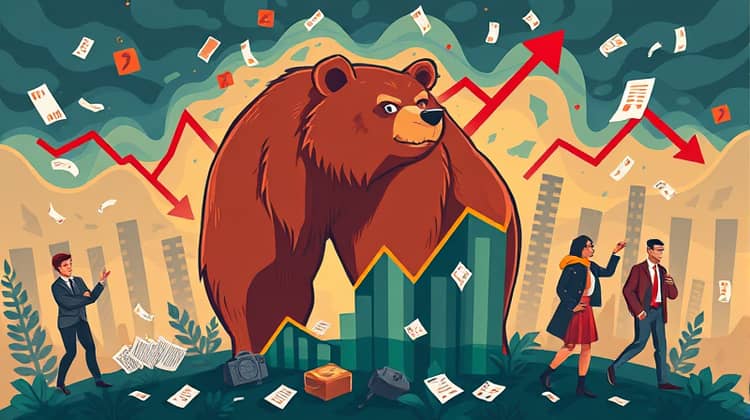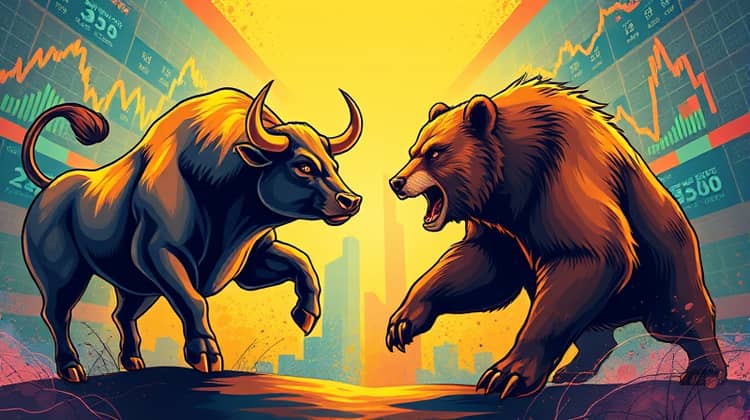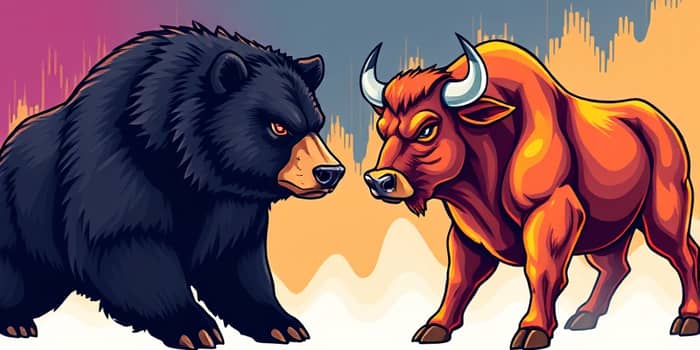In the world of finance and trading, understanding market trends is crucial for investors. Two terms that often surface in discussions about market conditions are 'bear markets' and 'bull markets.'
These terms describe the overall trend of the market and inform investors about potential investment strategies based on market conditions.
As an investor, knowing the characteristics, impacts, and defining features of these two types of markets can help you navigate investments more effectively.
This article aims to explain the key differences between bear and bull markets, highlighting their definitions, characteristics, and impacts on investors.
We'll also discuss important indicators to watch and provide insights into how to invest in each type of market environment.
By the end of this article, you will have a clearer understanding of what to expect during both market types, empowering you to make informed investment decisions.
Whether you're a seasoned investor or a novice looking to dip your toes into the market, understanding the dynamics of bear and bull markets is vital to optimizing your investment portfolio.
Let's dive into the details of these prevailing market conditions.
Understanding Bear and Bull Markets

Bear and bull markets reflect the overall sentiment in the financial markets, primarily driven by investors' expectations and economic conditions.
A bull market signifies rising prices and investor confidence, whereas a bear market indicates falling prices and a pessimistic outlook.
Understanding these concepts is fundamental for anyone looking to invest or participate in financial markets.
Defining Bear Markets

A bear market is typically defined as a period during which the prices of securities fall by 20% or more from their most recent peak.
This decline lasts for a sustained period, often accompanied by a general sense of pessimism among investors.
Bear markets can be triggered by various factors, including economic downturns, rising interest rates, or geopolitical events.
- Prices fall significantly over several months.
- Investor sentiment turns negative and pessimistic.
- Economic indicators often show signs of slowdowns.
Characteristics of Bear Markets

Bear markets have distinct characteristics that differentiate them from other market conditions and play a significant role in investor psychology. Understanding these traits helps investors prepare and strategize during such downturns.
- Long-term negative price trends.
- High volatility leading to uncertainty.
- Increased selling pressure as investors pull back.
Impact of Bear Markets

Bear markets can have significant impacts on individual investors and the economy at large.
During these periods, investors often experience emotional distress due to the declining values of their portfolios, leading to increased anxiety and hasty decisions.
Additionally, bear markets can trigger broader economic challenges.
Companies may delay investments or cut costs to navigate the downturn, resulting in job losses and reduced consumer spending. This can create a self-perpetuating cycle that prolongs the negative impacts of a bear market.
Defining Bull Markets

In contrast to bear markets, a bull market is characterized by rising stock prices and a general sense of optimism among investors.
Typically defined by a rise of 20% or more from recent lows, bull markets reflect periods of economic growth and increasing investor confidence.
- Prices rise steadily over a prolonged period.
- Investor sentiment is optimistic and positive.
- Economic growth indicators usually improve during this phase.
Characteristics of Bull Markets

Bull markets possess specific characteristics that indicate robust investor activity and strong economic signals. Recognizing these traits can assist investors in capitalizing on opportunities.
- Sustained upward price momentum.
- Low volatility creates investor confidence.
- Strong corporate earnings reports boost market confidence.
Impact of Bull Markets

Bull markets significantly impact investor behavior and attitudes toward the market, often leading to increased buying activity and heightened market participation.
Investors experience increased wealth due to rising asset values, making them more willing to invest or spend money.
Furthermore, a bull market can lead to economic expansion, as companies invest in growth opportunities, leading to job creation and more robust consumer spending.
This creates a positive feedback loop, reinforcing the market's upward trajectory and further fueling investor optimism.
Bear vs. Bull Markets: Key Differences

While both bear and bull markets are essential concepts for understanding market dynamics, they serve as opposites of each other in terms of investor sentiment and market performance.
- Bull markets are characterized by rising prices; bear markets are defined by falling prices.
- Investor sentiment is optimistic during bull markets, while pessimism reigns in bear markets.
- Bull markets often coincide with economic growth, whereas bear markets may align with recessions.
Indicators to Watch

To navigate bear and bull markets successfully, investors should closely monitor specific indicators that can signal market conditions.
Such indicators include stock market trends, employment rates, and interest rate changes. These factors can provide insight into potential shifts in market dynamics.
Additionally, keeping an eye on economic reports, such as GDP growth and consumer confidence indexes, can help investors anticipate market movements and make informed decisions.
How to Invest in Bear and Bull Markets

Strategizing your investment approach based on current market conditions is crucial for maximizing returns. Investors must adapt their strategies to align with whether the market is in a bear or bull phase.
Investing in Bear Markets
During a bear market, investors should consider defensive investing strategies that focus on risk management. This means looking for sectors that are less affected by economic downturns, such as utilities or consumer staples.
- Invest in defensive stocks that weather downturns better.
- Consider alternative investment options, such as bonds or commodities.
- Focus on maintaining liquidity to capitalize on future opportunities.
Investing in Bull Markets
In a bull market, investors may want to take advantage of the growing economy by being more aggressive with their investment choices. This includes diversifying into stocks with strong growth potential.
- Invest in growth stocks or index funds that track overall market performance.
- Reinvest dividends to capitalize on the upward trend.
- Explore emerging sectors with potential for rapid growth.
Conclusion

Understanding the differences between bear and bull markets equips investors with the knowledge to make informed financial decisions.
By recognizing the characteristics, impacts, and investment strategies suited to each market type, investors can navigate their portfolios more effectively and respond to market changes with greater agility.
Ultimately, whether in a bear or bull market, maintaining an informed and strategic investment approach is essential for long-term success.










